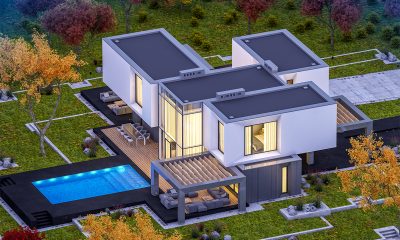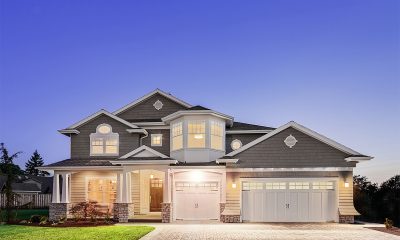General description
A smart table lamp is a connected and intelligent light that can be controlled from IP-enabled mobile devices (such as smartphones and tablets) and programmed to respond to data from other connected devices and online services. It allows you to customize your lighting for every occasion and moment, transforming it from an ordinary function into an extraordinary experience. Table lamps are typically meant to work as a functional light fixture that provide ambient, task or accent lighting, while also doubling as table decorations that enable a unique dialogue within a space. Incorporating processing and communication capabilities into table lamps facilitates sophisticated lighting management and offers infinite possibilities for value-added applications. Controllable from inside the home or anywhere in the world, smart table lamps provide lighting optimized to enhance comfort, support health, add drama and introduce flexibility.
LED technology takes lighting into a digital era
LED lighting and digital control technologies converge in table lamps to enable a whole new class of functionality and bring new levels of differentiation to lighting. LEDs use electrical power to stimulate electroluminescence that results in an output of electromagnetic radiation in the visible range of the spectrum. While this emission mechanism makes LEDs far more efficacious and reliable than their predecessors (incandescent and fluorescent lamps), the nearly instantaneous response of LEDs to changing current and their robustness against constant on/off switching lay the foundation for deployment of advanced lighting control strategies. The full range dimmability of LEDs not only lends table lamps the ability to deliver the right amount of light on demand, but also makes it possible to actively control the light spectrum through additive color mixing. Precise spectral control to set scene statically or dynamically enables delivery of light that influences the atmosphere and stimulates the human circadian system. The semiconductor nature of LEDs allows them to work seamlessly in synergy with sensor and control systems through intelligent LED drivers that incorporate digitally controlled power stages.
System design
Smart table lamps of various designs and functionalities are available to enhance your lighting experience. The basic architecture of a smart table lamp consists of an LED module with integrated thermal management components, an intelligent LED driver, a controller, and a wireless communication module. Configurations of these components are feature-dependent. The table lamps may be required to turn on or off the lights, dim light output, adjust color temperature, provide color mixing, sync lights with music and movies, select preset scenes, set custom lighting schedules or create lighting groups without using physical switches and in the most convenient way.
The LED driver is designed as a constant current source that delivers a regulated DC output. It also executes digital instructions to dim/switch an LED string or multiple LED channels. The digital instructions are assigned by a digitally addressable controller. The controller interfaces between the LED driver and remote-control devices. It is typically comprised of one or more microprocessor, memory, and input/output (I/O) ports which allow lights to operate in an autonomous manner in response to its internal program or wireless control inputs. As increased processing capacity finds its way into lighting applications, sophisticated lighting control algorithms may be performed by microcontroller-based systems to enable advanced dimming and scheduling functions.
Dynamic lighting
A feature that is almost universally incorporated in smart table lamps is dynamic lighting. Changes in luminous intensity and light color can be used as a design tool to adjust for atmosphere and aesthetics as well as to control physiological and psychological reactions. Dynamic lighting may refer to simple dimming, warm dimming, tunable white and full-color tunning. Simple dimming involves only light intensity adjustment. Warm dimming or dim-to-warm dimming is intended to simulate the behavior of incandescent lamps which exhibit a reduction in correlated color temperature (e.g., CCT drops from 2700K-2200K) while dimming. Tunable white lighting allows users to independently adjust color temperature and luminous intensity to their desired effect. This technology is the enabler of human centric lighting (HCL) which delivers the right amount and spectral composition of light at the right time of day to help avoid circadian disruption and support health, wellbeing, and performance. Full color tunning provides dynamically color changing light through additive color mixing which blends at least the three primary colors of visible light (red, green, and blue) to create secondary colors.
Color mixing
CCT and color tuning necessitates the use of multiple channels of LEDs. Each channel of LEDs needs to be individually controlled to ensure an accurate dimming ratio of the various colors of LEDs. Color temperature tuning for dim-to-warm and tunable white lighting are accomplished by adjusting the ratio between the different whites. Adjustable-color table lamps are designed as RGB, RGBA or RGBW systems. These systems typically use dumb or non-addressable LED packages that are operated by external driver circuits. The LED channel is formed by a string of LEDs that emit light in the same color. All LEDs in the string are controlled with a master switch or dimming control, which means they respond in the same fashion (on, off, or dimming).
To produce different colors and different luminance levels across a light emitting surface simultaneously, individually addressable LED packages are used. In these three-, four- or five-color LED packages, each of the component LEDs is individually addressable and controllable. A controller chip is embedded directly in the LED package to provide drive current regulation and dimming control for each component LED.
LEDs can be dimmed with the pulse-width modulation (PWM) or constant current reduction (CCR) method. To produce predictable colors from RGB, RGBA or RGBW systems, PWM dimming is commonly used due to its ability to support 256-to-1 or higher dimming ratios and to maintain color point over the full dimming range.
Wireless data communication
A communication interface is used for the light controller to send and receive information to and from other external devices. The interface is a protocol that defines procedural rules for the exchange of data. Smart lighting increasingly counts on wireless connectivity to thrive. Smart table lamps communicate with the information carrier via a wireless network that use ZigBee, Bluetooth, Wi-Fi or Z-Wave technology. Each of the wireless communication protocols has its own strengths and weaknesses. The choice of protocols must take into consideration if the table lamp is line-powered or battery-powered, interoperability with other smart home devices, the cost of the solution, as well as other factors.
ZigBee, Z-Wave and Bluetooth are designed for low-power, low bandwidth short-range communication. ZigBee is a self-healing, secure, robust, and mesh-capable protocol. As with ZigBee, Z-Wave also practices secure communication i.e., 128-bit encryption symmetric keys for secure data transmission in home automation. With Z-Wave, network congestion is not usually an issue because this protocol operates in lower frequency that steers clear of Wi-Fi, Bluetooth and other systems operated in the crowded 2.4GHz band. Both ZigBee and Z-Wave require the use of hubs to enable end users to control smart devices with an IP-enabled device.
Bluetooth and Wi-Fi have the privilege of being directly supported by smartphones or tablets. Wi-Fi is ubiquitous in today’s home, but it consumes much more power than other wireless communication technologies and is vulnerable to hacker attacks. Compared with ZigBee networks that allow lights to be controlled from anywhere in the house as well as the world, smart table lamps operated in a Bluetooth network are controllable only within the Bluetooth range — about 30 feet or 10 meters.
App control
Smart table lamps are regularly controlled via mobile applications installed on iOS or Android devices. A mobile app provides an intuitive interface through which the user can dim and turn on/off lights, create or trigger scenes, set up away automations, and schedule lights. Smart table lamps can also be controlled with voice commands via smart home assistants such as Amazon Alexa or the Google Assistant. Integrating with cloud-based task automation services such as IFTTT allows smart table lamps to interact with other cloud-based IoT devices and web applications.



















Loading...